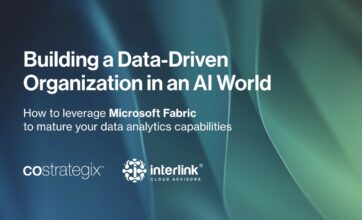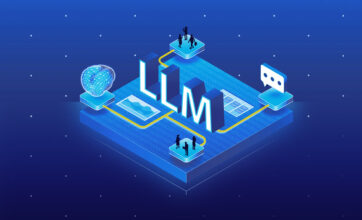Composite AI: The Smarter Way to Navigate AI Complexity
- 10 minutes read
Stacking “everyday AI” models can be a more cost-effective and scalable solution than GenAI, especially helpful in navigating the complexities of AI. There are two common ways to “stack” AI models: Ensemble solutions and Composite AI solutions.

Clients often come to us looking to stand up an AI Proof of Concept (POC). They bring great ideas for using Generative AI (i.e., LLMs, the drivers behind products like ChatGPT) to solve a business problem or improve their operational efficiency. Of course, LLMs are fantastic and have access to a broad base of general knowledge. (They have, after all, been trained in all the works of Shakespeare, and they can pass the bar exam!)
But LLMs can also be quite expensive, both in terms of latency (the time it takes to complete a given task) and in actual cost (dollar price per API call). So even though LLMs may be really good at tasks like evaluating your contracts (like your lawyer), they may also be really expensive (like your lawyer).
To promote affordability and scalability, we often make one of two recommendations:
- Consider Ensemble solutions
- Consider Composite AI solutions
Consider Ensemble Solutions
Does your AI Strategy really need to use an LLM that is versed in all the works of Shakespeare? Maybe not. Before LLMs hit the AI scene with all their flash and panache, we were solving business problems with more basic AI models, now known as “Everyday AI.”
“Everyday AI” refers to more specialized machine learning (ML) models, such as Decision Trees and Neural Nets, used primarily for prediction, classification, and anomaly detection. These simpler and narrower models typically operate behind the scenes. They are embedded into tools and applications we use every day – like movie recommendations on Netflix, fraud detection monitors on your credit cards, and voice assistants that manage to stay calm in spite of you repeatedly yelling “Talk to a Manager!” while talking to tech support.
One of the key advantages of “Everyday AI” is its modularity. Not only can these models be integrated into a product, but they can also interface with other AI models. This combining of multiple AI models is referred to as an “Ensemble Solution.” An Ensemble Solution combines a number of these smaller, specialized models together to form a larger, more capable, expert system.
For instance, a retail recommendation engine might integrate a demand forecasting model, a customer segmentation model, and a sentiment analysis model to deliver hyper-personalized recommendations. This composability allows organizations to scale their output, while at the same time offering content that is customized for each individual customer. And, the individual AI components that comprise the “Ensemble Solution can be independently retrained or swapped out to achieve improved performance as the real-world results are analyzed and fed back into the solution.
Consider Composite AI Solutions
“Composite AI” is similar to Ensemble AI in its modularity, but is broader in scope. It may process multimodal data (a variety of structured and unstructured data types) and integrate diverse AI technologies (GenAI, machine learning, optimizers/solvers, learning algorithms, heuristics, etc.) into a unified system to achieve complex, multifaceted results. Whereas Ensemble Solutions generally provide specific answers to specific questions (e.g., “No, that is not an anomaly” or “That is a picture of a dog”), Composite AI solutions are not necessarily bounded by known data or known classes.
An example of a Composite AI Solution may be a healthcare diagnostic tool that combines MRI image analysis (computer vision), written patient histories (NLP), and genetic data (machine learning) to provide a list of the Top 5 lifestyle changes that could increase healthcare outcomes for a given patient.
Another example would be a use case where you wish to find real estate listings that best match a given set of criteria. You could use an LLM to extract the key attributes from the universe of listings, even if they are in different formats, use different terminology, etc. Then you could feed those key attributes into an Everyday AI model that scores the record against the target criteria. This combined solution uses the best capabilities of each tool, while optimizing latency and cost, and maximizing accuracy.
Composite AI Solutions operate at a higher architectural level than Ensemble Solutions, addressing challenges like data fusion and cross-technology interoperability. Modern scalable and customizable AI solutions generally will include many of these ingredients.
Benefits of Both Ensemble and Composite AI Solutions
The benefits of both of these options lies in their modularity:
- Debugging a system composed of smaller models is inherently easier than troubleshooting a monolithic solution.
With modular systems, errors can often be traced back to a specific model or interface between models, making issues faster to isolate and resolve. In contrast, single-model AI solutions are highly complex and often function as black boxes, making it difficult to pinpoint the root cause of unexpected outcomes. The transparency of smaller models empowers teams to quickly identify and fix errors, reducing downtime and improving reliability. - Smaller models can be trained on less data.
Because they are focused on narrow, domain-specific tasks, the individual models in an ensemble or a composite solution require only a fraction of the data needed to train a single general-purpose model. This makes it more feasible for organizations with limited datasets to develop and deploy AI solutions. Additionally, smaller data requirements reduce the computational and environmental costs of training, making them more accessible and sustainable. - Specialized models with clearly defined objectives are inherently simpler to test. Clear input-output expectations make it easier to design comprehensive testing scenarios and evaluate model performance against concrete success metrics.
- Small, simple models make it easier to detect and correct issues related to bias and drift.
Because these models are more transparent and interpretable, anomalies or shifts in data distributions become easier to identify and address. By monitoring each model’s performance separately, teams can proactively address issues before they cascade across the system. This level of oversight is far more challenging with single-model solutions, where subtle biases can become deeply embedded and harder to detect. - Bigger problems can be broken down into separate tasks.
Some of those tasks are best performed by Generative AI (such as an LLM, an image creator, etc.), while others may best be performed by Everyday AI or other technologies. Combining models to create an overall solution leverages the best attributes of multiple approaches.
The Elegance of Ensemble Solutions and Composite AI
Both Ensemble AI and Composite AI play a valuable role in building a modern, resilient AI strategy. Ensemble AI sharpens accuracy and reliability by leveraging the power of many models working together. Composite AI brings together the strengths of generative models, traditional AI, machine learning, and optimization techniques to tackle complex challenges.
Amid all the buzz around GenAI, it’s important not to overlook the value of Everyday AI – the tried-and-true approaches that are faster, more accurate, and purpose-built for tasks like anomaly detection, classification, and prediction. GenAI may be the shiny new toy, but the smartest solutions often come not from a single, multi-purpose model, but rather they are built from a thoughtful combination of tools – where the whole becomes greater than the sum of its parts.
CoStrategix is a strategic technology consulting and implementation company that bridges the gap between technology and business teams to build value with digital and data solutions. If you are looking for guidance on data management strategies and how to mature your data analytics capabilities, we can help you leverage best practices to enhance the value of your data. Get in touch!
AI Strategy & Solutions – Elevate your business with advanced analytics
Data & Insights – Drive insights that lead to competitive advantage
Product Development – Build platforms that power unique digital capabilities
Platform & Technology Modernization – Modernize for stellar experiences, efficiency, and AI
Related Blog Posts
Building a Data-Driven Organization for an AI World
February 4, 2025
The Future of SSRS, SSIS, and Microsoft Fabric
September 20, 2024
Experimenting with Large Language Models for Brand Matching
August 2, 2023
ChatGPT Is Forcing The Question: Do You Have An AI Strategy?
March 29, 2023








